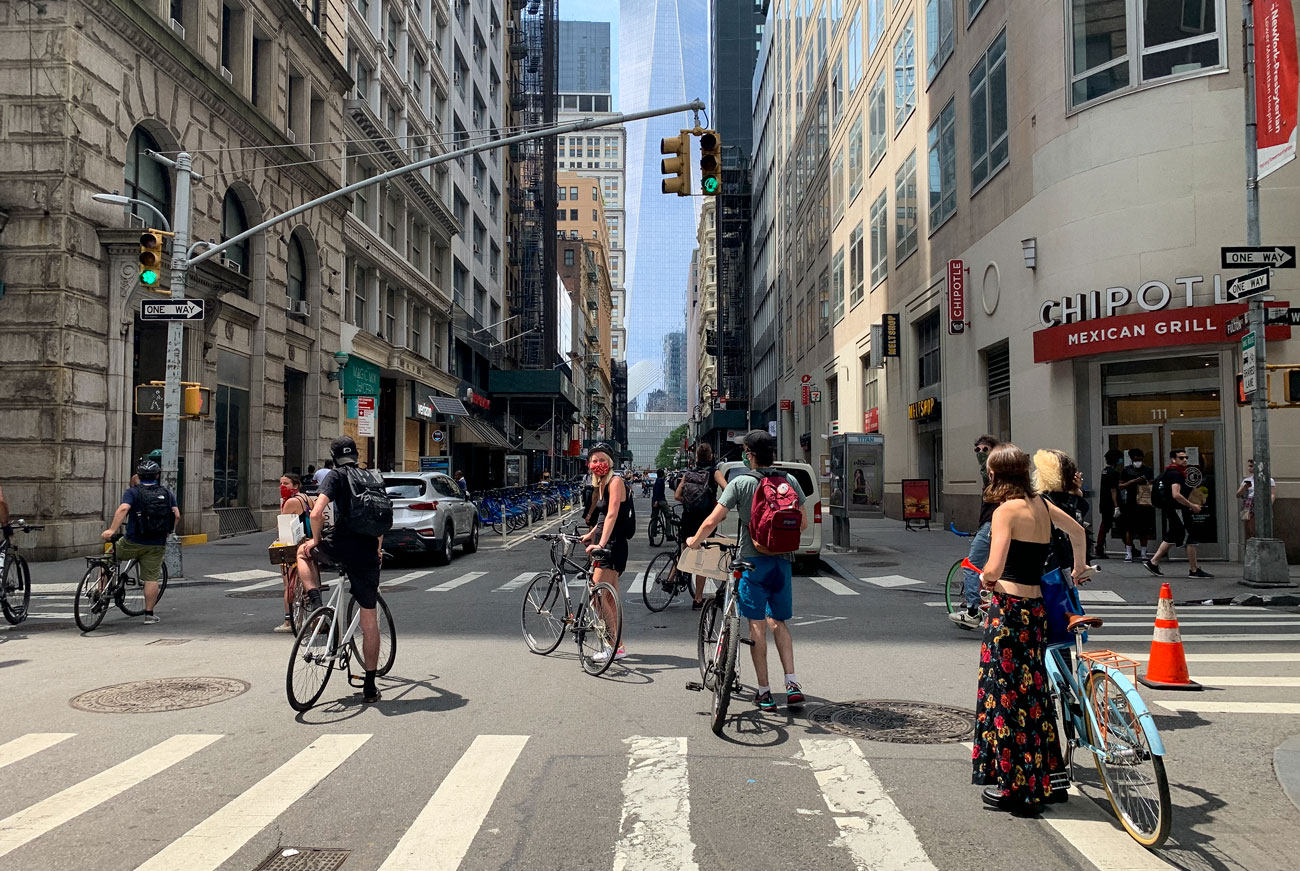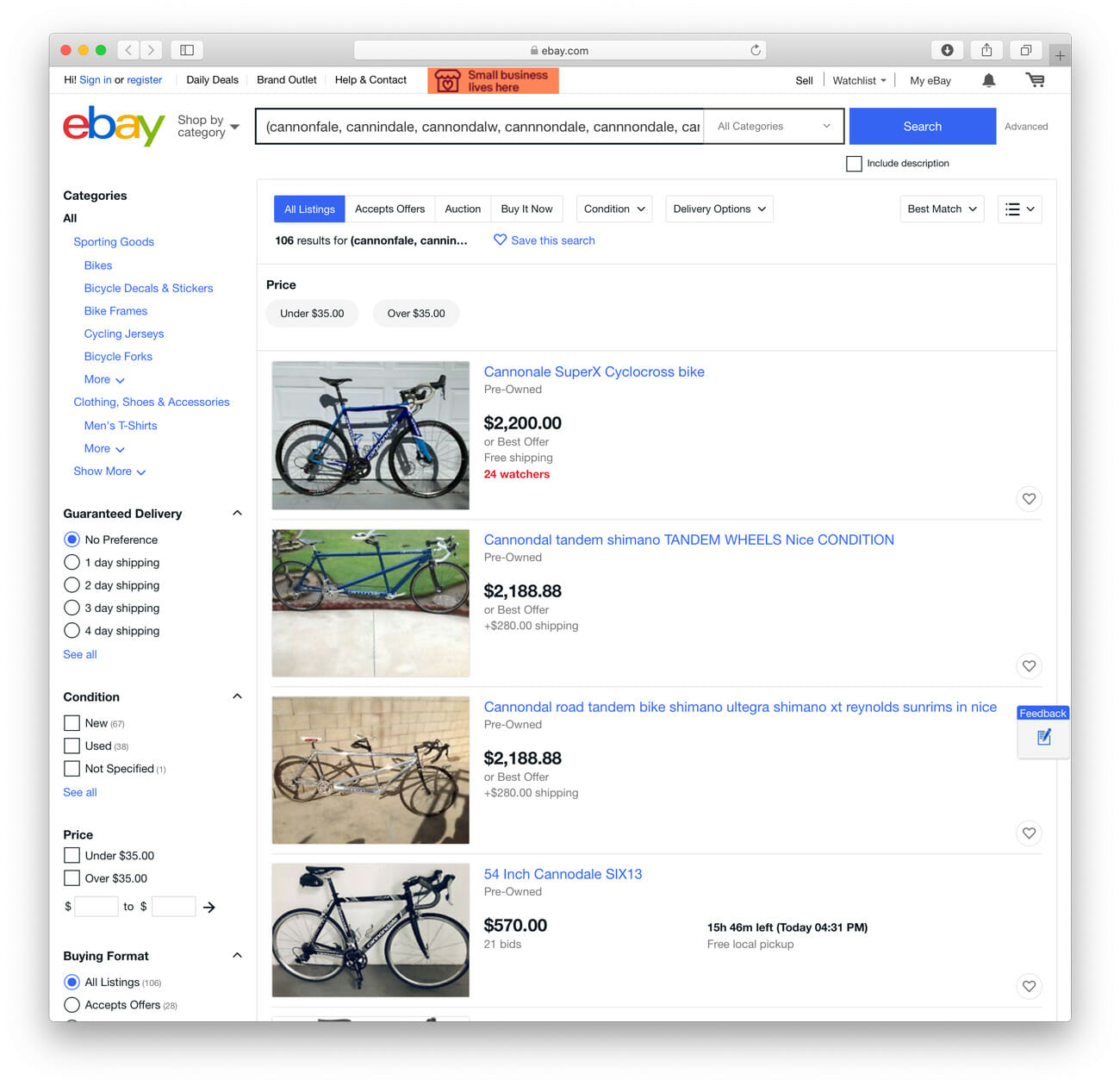The past several days have taught us many things. We still have a long, long way to go toward police reform and racial equity, but the unprecedented level of national and global protesting seems to be moving the needle toward positive change. This fight is far from over, however, and if you ride a bike, you can actually put it to good use at some protests.
“We learned early on that bicyclists can play a crucial role in helping to both lead and ensure the safety of protests,” says Carlos Polanco, a New York City protest organizer. “When we have y’all up front, it allows us to close streets off, create distance between us and the cops, and scout ahead.”
I’ve ridden my bike to a few protests and ended up marching with it alongside me, but this weekend when I joined a protest Polanco helped lead, I got recruited into a whole new role as part of such a bike brigade. It can get pretty intense when you find yourself using your wheels to shield protestors from a bunch of baton-wielding cops, but it’s also empowering and rewarding work that makes a difference. Here are a few things to keep in mind if you bring your bike to a protest and get called into action.
1. Listen well.
For folks that want to help out, they should pay attention to the organizers and the route they have planned,” Polanco says. Most of the time you’ll be walking or riding in front of the rest of the protestors to do recon and block intersections so the procession can move through safely, so it helps to know where you’re going. There will likely be a leader of the bike brigade as well. Introduce yourself and when in doubt, follow his or her lead.

2. Don’t worry what kind of bike you ride — just that it’s well maintained.
Our crew of close to a dozen featured all kinds of bikes, from road rides to beach cruisers to gravel bikes (at least one, anyway). You just want to make sure yours is in good working condition (double check the brakes and tire pressure) because you’ll find yourself doing a lot of stopping and starting and maneuvering, and you want your wheels to be up to the task.
3. Stay alert.
There are still a lot of cops out, and though they seem to have calmed down a bit from last week (in NYC anyway), it’s still important to be on the lookout. “Keeping your eyes open and trying to notice where police are moving or coming from is a huge help,” Polanco explains. “It helps us ensure everyone’s safety and know what’s happening ahead before we get there.”
4. If you bring a sign, be smart about it.
This is just a simple logistical thing. If you bring a traditional cardboard sign (like I did), you’re gonna have to ride with one hand to hold it up. Consider rigging it up to attach your backpack or a rear rack, which will make your life much easier.

5. When the cops do show up, be ready and willing to put those wheels on the line.
Let’s be real. It can be a bit nerve-wracking at first to stand right in front of a cop in full riot gear, with his helmet and baton and zip-tie style handcuffs, but your two-wheeled friend makes all the difference here. “Use your bike as a barrier!” says Polanco. “Place it out between you and the officer, since it creates distance and an obstacle — what they do to us protestors. Trust in the people around you and stick together; there is always power in numbers.”
Stand tall, you’re helping protect that big crowd of like-minded citizens, but at the same time, they’ve got your back. And trust me, there’s nothing quite like the feeling of you — and your bike — being part of something so much bigger than yourself.




